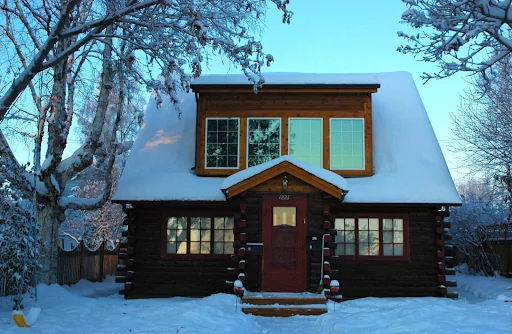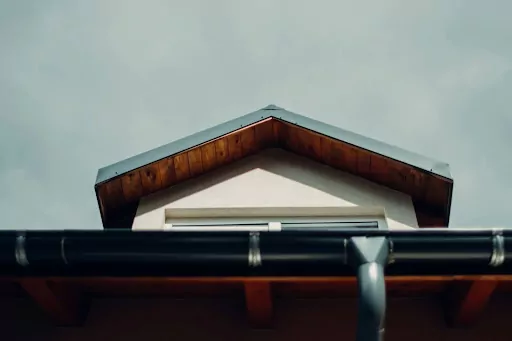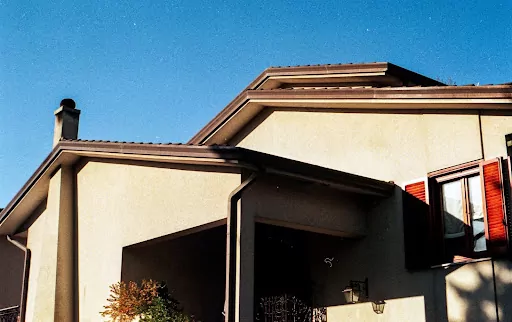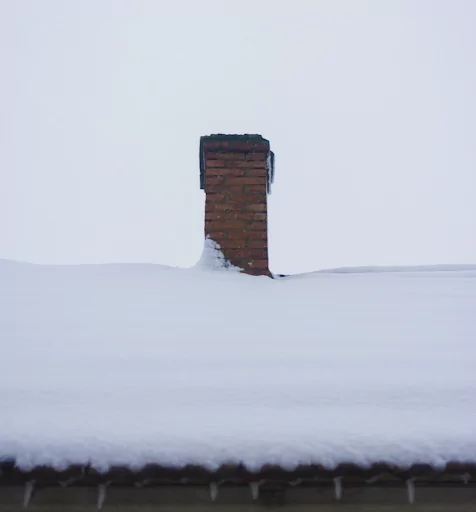Gutters play a vital role in the function of your roof and exteriors and help keep your home looking its best. They prevent mold, mildew, and other damage to homes by directing water away from the foundation. Without them, water would stream down the siding and outer walls and pool up in the attic or basement. That’s why clogged gutters can be such a problem!
From clearing clogged gutters to replacing gutters altogether, here’s what you should know from the experts at CoMitted 365 Roofing & Exteriors.
What is the Anatomy of a Gutter?
Gutters consist of several components that collect rainwater from the roof and channel it away from the building’s foundation. Here are the main parts of a gutter system:
- Gutter: Trough-like channel attached to the roof’s edge that collects rainwater.
- Gutter Hangers: Brackets or hooks used to attach the gutter to the roof’s fascia board or the structure of the buildin, providing support and stability for the gutter.
- End Caps: Placed at the ends of the gutter to close them off and prevent water from leaking out.
- Downspouts: Also known as leaders or drainpipes, these vertical pipes connect to the gutter system and carry water to the ground or a drainage system.
- Elbows and Extensions: Elbows are used to redirect water flow around corners or obstacles, while extensions are additional downspouts used to direct water away from the building’s foundation.
- Splash Blocks or Splash Guards: Placed at the base of downspouts to prevent soil erosion and redirect water away from the foundation. They help distribute water evenly and reduce the impact of runoff.
- Gutter Guards or Screens: Optional accessories to prevent debris such as leaves, twigs, and insects from clogging the system. They can be installed over the gutter to prevent blockages.
- Seams and Joints: Seams and joints connect the gutter’s sections. Proper sealing of seams and joints prevents leaks and ensures effectiveness.
- Pitch or Slope: Gutters are typically installed with a slight pitch or slope towards the downspouts to ensure water flows smoothly and efficiently toward the drainage system.
- Flashings: Metal strips installed along the roof’s edges and underneath the shingles to direct water into the gutter and prevent leaks at the roof’s edge.
Now, let’s look at what to do if these components stop working properly because they’re clogged up.
How to Remedy Clogged Gutters
Clearing clogged gutters helps prevent damage to your home’s foundation, walls, and roof. If you’re dealing with gutter blockages, here’s what we recommend:
1. Gather Necessary Tools and Safety Equipment:
- Sturdy ladder
- Work gloves
- Gutter scoop or trowel
- Bucket or garbage bag
- Garden hose with a spray nozzle (optional)
- Safety goggles (optional but recommended)
2. Safely Access the Gutters:
- Set a sturdy ladder on level ground and lean it against the house near the clogged gutter. Ensure the ladder is tall enough to reach the gutter comfortably without overreaching.
- Use proper ladder safety techniques, such as maintaining three contact points and having someone spot you.
3. Remove Debris:
- Put on work gloves to protect your hands from sharp objects and debris.
- Use a gutter scoop, trowel, or your hands to scoop out leaves, twigs, dirt, and other debris from the gutter. Start at the downspout and work along the length of the gutter.
- Place the debris in a bucket or garbage bag as you go to prevent it from falling onto the ground or clogging the downspout.
4. Clear the Downspout:
- Check the downspout for clogs by running water from a garden hose through it. If water doesn’t flow freely, there may be a blockage.
- Use a plumber’s snake, pressure washer, or long-handled brush to clear obstructions from the downspout. Start at the top and work your way down.
5. Flush the Gutters:
- Once most debris is removed, use a garden hose with a spray nozzle to flush out any remaining dirt and small particles.
- Direct the water flow towards the downspout and observe if it drains properly. If water overflows from any section, there may still be a blockage that needs clearing.
6. Inspect and Repair:
- After clearing the gutters, inspect them for damage, sagging, or loose fasteners. Repair any issues to ensure proper functioning. More on this later.
- Consider installing gutter guards or screens to minimize debris in the gutter system.
7. Regular Maintenance:
- Schedule regular gutter maintenance at least twice a year, ideally in the spring and fall, to prevent clogs and water damage.
- Keep nearby trees trimmed to minimize leaves and branches in the gutters.
- Follow these steps and maintain a regular cleaning schedule.
Gutter Maintenance: Repairs vs. Replacements
You may find your gutters aren’t working as well as they should be. Here are the ways to tell if you need to repair or replace your gutters.
Repair your gutters if you’re seeing:
- Cracks: Individual cracks can be easily repaired, but more extensive cracking means the whole gutter should be replaced. If you have trouble identifying singular cracks, run your hose water down the gutter to see where you’re getting leaks.
- Loose seams: Traditional gutters often need repairs at the seams, where the joints can come loose. Some homeowners bypass this issue altogether by investing in seamless gutters. You can also install fascia brackets, which attach to the eaves and support the gutters from underneath.
- Poor pitch and position: Water pooling and overflow can be signs of poorly pitched or placed gutters, whether installed that way or shifted because of the wind and weather. Gutter pitch and position can significantly affect overall functionality.
Replace your gutters if you’re seeing:
- Rust: Older gutters tend to get rusty, which can weaken them, causing them to collapse.
- Leaks and extensive cracking: Cracks and leaks can cause structural damage in your home, so address these issues early on.
- Sagginess: Saggy gutters result from heavy snow or rain. In Minnesota, preemptively schedule a gutter inspection during the fall and winter so your system is ready for the incoming weather!
If your gutters aren’t working properly, it might be time for a replacement.
 Winter Gutter Maintenance Tips
Winter Gutter Maintenance Tips
As ice forms, it expands—which can mean major damage to your gutter systems. While it’s best to tackle gutter maintenance before the icy conditions set in, you can incorporate a few tasks into your winter to-do list.
- Watch out for ice dams. Ice dams, a Minnesota homeowners’ #1 nemesis from November to March, can wreak destruction on your roof and home during the great and terrible winters of the Northern Midwest. They also threaten the integrity of gutter systems by causing heavy, icy buildups and blockages that weigh down your gutters. When ice dams enter the scene, your gutter systems can become warped and even broken.
To combat this, ensure that melting snow and ice have a clear path to flow off your roof and down the gutter system. You can use a special long-handled rake to break up any buildup or, as a preventative measure, install heating cables.

3. Test Your Gutter Functionality. Minnesota
occasionally has an unseasonably warm winter day. To avoid freezing water and accidentally creating blockages in your gutters, a test run is best conducted on a warmer day. Use your garden hose to simulate water draining through the gutters and downspouts to check if they function correctly.




 Winter Gutter Maintenance Tips
Winter Gutter Maintenance Tips